
Exhibitions: Current | Upcoming | Past
Exhibitions: Past
10 From 10
The Director's Cut 10 Artists From the Gallery's First 10 Years
January 27 – February 24, 2011
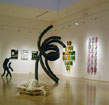

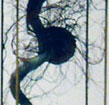
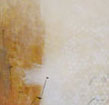
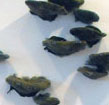

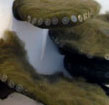
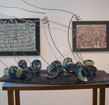
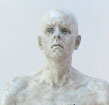
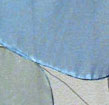
The Gallery first opened its doors to the public in October 2000. From the beginning the Gallery's role has always been to be a forum to present ideas about art and art-making. Over the years, we have had the pleasure of meeting and working with many extraordinary people, and together we have created many memorable exhibitions. To acknowledge this milestone, the Gallery invited ten artists from the first decade to join the celebration. As the Gallery moves into its second decade, we take a moment to look back over our first ten years with an exhibition that celebrates the diversity of the artists whose works have graced our walls.
The artists in this exhibition are Ronald Wilczek from In the Landscape, Mia Brownell from Holding Pattern, Michael Hansel from Alchemy and Archetype, Joyce Utting Schutter from Three Degrees of Separation, Esme Thompson, Context: Impulse Order Response, Michele Provost, in Forces Of Nature Tales of Remembrance, Stacy Latt Savage from In Body, Lin Lisberger, I Witness, Lloyd Martin from Drawing NOW and 2x2x2, Cristin Searles from Snowblind.
Kathleen Hancock
Director
The Artists
Ronald Wilczek
My sculptures have grown out of my exploration of the natural environment and my study of landscape drawings, prints, and paintings from many conventions. These pieces reflect the juxtapositions I find in nature through combined wood and metal elements, with direct drawing on wood surfaces, or interwoven drawn, painted, and folded paper and Mylar within a carved or constructed space.
My focus in these pieces is on the ordinary occurrence in the landscape–the evening light on a rain-dotted puddle, tall grass at the edge of a clearing. I attempt to seize the moment and see the surface of that puddle or the movement of that grass as an extraordinary reality. My pieces explore dual emotions about a scene: is it an open space frozen at a particular moment in time or a narrative space inviting me in, challenging me to find an exit?
Mia Brownell
I'm not into agriculture or gardening, but every supermarket I walk into, wherever in America, I am transported to a unique place without seasons. Walls and pyramids of perfectly lit produce stop time and quote biblical notions of Eden. The whole concept of not having a winter is a little absurd, no matter how amazing it looks. The synthesis of these natural and artificial states creates an ambiguity that I find captivating.
American attitudes towards food as a commodity fascinate me. My paintings embrace a fusion of traditional still life techniques and scientific models of proteins, sublimated by notions of American dyspepsia.
Michael Hansel
Through my sculpture, I attempt to satirize function while also suggesting a conceptual relationship between life and industry. My primary method is to create industrial looking forms, which serve only aesthetic purposes.
The contrasting relationship between hard and soft forms is the basic component of how I interpret things visually. Their interaction is, in one way or another, the overriding concept in all the objects that I have made. Each piece, I think, tells a slightly different story. Some suggest a tranquil association between two very different components. Others allude to machines that can manipulate organic things and sometimes plant-forms start to take on mechanical characteristics. All of them attempt to illustrate the sense of irony that seems to exist when forms are separated from their function.
Joyce Utting Schutter
I am becoming increasingly aware of the interconnectedness of all things: bird and wind, eye and shadow, breath and bone. Existence – the whole of it – is one breathing entity. Inhale: seeds germinate, clouds billow, rivers flow. Exhale: leaves decay, tides ebb, trees fall; no evaluation, no judgment, no independent opposites, simply a rhythm of complements. Everything in nature is part of this rhythm. Human intervention can alter it or interrupt it, but every breath remains life-giving. Fleetingly, steadily, each breath gives way to the next.
Esme Thompson
In nature and in art, the repetition of simple pattern often organizes complex structures. My paintings focus on the correspondence between man-made decoration and design found in nature. Cross-referencing patterns I depict similarity between, for example, the microcosm of a cell and the macrocosm of an organic architectural detail. These models appear in my work as networks of line and layers of transparent color. Through the organization of the space of the painting I emphasize connection, integration and relationship of the parts to the whole, revealing the links that connect ornamental iconography to the structures of the natural world.
Michele Provost
The imagery for this body of work has evolved from my reflections on memory and time.
Consider dormant memories waiting to be recalled and how these recollections influence and transform the present. Imagine each memory as a line in space.
Envision these lines collectively.
Now add concentric circles to the visual vocabulary. Consider the historical significance of circle as icon: perfection, wholeness, infinite timelessness and, conversely, instability, chance and uncertainty.
In my work, the gesture of line interacts with the sensuous qualities of painting, weaving into the paint, submerging and resurfacing again and again. The surface is built by layering, scraping, embedding and excavating line and color.
The images are not meant to answer all the questions, but rather to act as a stimulus for further observations when we pause to be still.
Stacy Latt Savage
The human figure is my primary source of inspiration as an artist. My desire for direct communication and expression keeps the figure central to my work. I believe that when one encounters a figure, or even the fragment or illusion of a human being, the connection is immediate and unavoidable.
My sculptures are visual dialogues between the observed and the invented. Naturalistic figurative elements work in partnership with contrasting expressive elements to create sculptures that embody a specific tone or residue. Gesture, how the body holds itself, can expose and reveal the state-of-being of an individual. The way a person stands can tell a story on its own. Our corporeal existence is infused with our experiences, our own human condition, and holds our public as well as private reactions to daily life. I have been inspired by this truth when applied to natural growth, and the contorted, circuitous way lines in nature move and come to being. Even in the most adverse conditions, a branch will find its way to the light, out of a necessity to survive.
Lin Lisberger
I am predominantly a wood carver and have been for most of my sculpture career. I have always included narrative in my sculpture, often including architectural references. Ladders and bridges are among the most fundamental architectural forms, suggesting movement through space and endless possibilities. These are sculptures about journeys taken as we grow and change. Thus the ladder and bridge are animated and have a launching place from which another journey can begin. The bridge and the extended ladder become part of the life voyage and open up the imagination to the many possibilities ahead.
Lloyd Martin
My inspiration for these works is from the visual encounters I witness everyday. The building my studio is located in and the surrounding post industrial landscape. I keep a photographic journal of these architectural incidents which become the springboard for color and compositional ideas. Although there may not be direct links to individual photographs, I create artificial environments where painting events can take place. These events metaphorically echo observed situations.
Cristin Searles
My sculptural installations range from ethereal collections of near weightless objects to gatherings of earthy, densely packed ones. They have a sense of humor, and are flirty, sexy, playful. . .they are about beauty, delicacy, joy, handwork, skin, sensuality and space. Though constructed with the care of couture garments from silk, beads, feathers, felt and myriad millinery supplies, the works become minimal and crisp microscopic worlds greatly enlarged.

